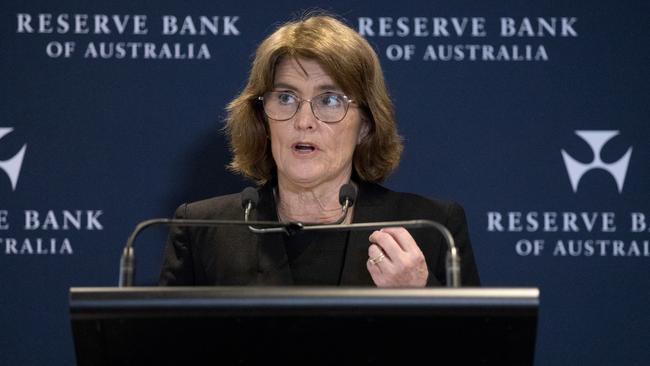
That’s a problem for Australian monetary policy now. The public focus is on the monthly inflation figure and what it implies for the next interest rate decision. For the financial press, this is a gift that keeps on giving, filling their columns. It blots out any useful discussion of monetary policy.
True, Australia has an inflation target which is the lodestone of Reserve Bank policy. This requires a special focus on prospective inflation.
But just as the sailor looks at more than the compass in plotting the best heading, there is more to inflation targeting than a blinkered fixation on the monthly inflation numbers and a mechanical policy response.
Overlaying this complexity, there is a strong public belief that the bank’s decisions over the next few months will greatly influence the forthcoming federal election. Some even say the bank will bow to political pressure to lower rates prematurely.
Whatever policy action the bank takes will be seen as politically motivated. Its reputation for independence and non-partisanship will be undermined. Credibility and social licence are at stake.
Avoiding this political quagmire requires the bank to provide a narrative which makes explicit the judgmental trade-offs and risk assessments needed to respond to this uncertainty, which are absent from the simplistic version of inflation targeting. The bank must make the case that, whatever decision is taken, it is their well-considered medium-term assessment, not it succumbing to any political pressure.
The basis for this narrative already exists but is lost in the short-term focus on the next inflation number.
When inflation rose sharply during the Covid crisis, then RBA governor Philip Lowe said the bank would return inflation to target along a “narrow path”, a recognition that there were different tactics within the broad inflation-targeting framework.
One approach was to push up interest rates sharply enough to guarantee a speedy return to target, even if this involved higher unemployment. Indeed, higher unemployment was seen as the necessary cost of bringing inflation down.

The other was more subtle: the “narrow path”. This implied a more finely tuned interest-rate increase, hoping to keep unemployment from exceeding the NAIRU – the unobservable but often-invoked unemployment rate at which inflation is triggered.
While the “narrow-path” terminology was new, this was not a departure from Australia’s longstanding “flexible inflation target”, traditionally less dogmatic than New Zealand’s pioneering single-objective approach. This strategy made sense. The post-Covid inflation was, after all, largely a supply-side phenomenon, so should be allowed to pass through without crunching the economy. Decades of successful inflation targeting should anchor inflation expectations and draw inflation back to target over time.
But, as so often happens, there was more happening than is encompassed by any simplistic textbook model.
Interest rates had been taken abnormally low during the post-GFC decade and taken even lower during Covid. Just returning interest rates to somewhere around normality – that is, clearly positive in inflation-adjusted terms – would hurt all those who had borrowed at the low rates, unexpectedly cutting their real incomes and spending. Policy would fall unevenly.
To add to the complexity, a big fiscal stimulus had been applied during Covid. This demand-side pressure remained even when Covid passed.
In the event, inflation developed, as usual, in its own idiosyncratic way. The supply shock did indeed pass through, with prices stabilising while unemployment remained very low. While the credibility of the inflation targeting kept inflation anchored without a wages/prices spiral, inflation remained above target.
The jury is still out on whether we are still finely balanced on the “narrow path” or could slide off, either into accelerating inflation or into recession. Or, perhaps the most difficult quandary of all, are we stuck with inflation stable but above target? Can the inflation target, so successful during its first two decades, survive this outcome?
Experience in the US and New Zealand might add to the narrative, illustrating the range of approaches within the broad strategy of an inflation target.
The US Fed has not talked of a “narrow path”, but has clearly avoided the vigorous policy response advocated by some high-profile economists such as Larry Summers, and has explicitly attempted to balance its mandated twin objectives of low inflation and full employment.
The Fed raised interest rates more than Australia but is now around the same level. The US has a much more expansionary fiscal policy, and its labour market is even tighter than Australia’s. Inflation has stabilised but has not returned to the target. There is a widespread expectation of interest rate reductions, but the Fed has signalled its caution.
Meanwhile, the Reserve Bank of New Zealand has taken the more vigorous path. Interest rates were raised six months ahead of Australia and raised by more. Inflation has come down to target; GDP is falling; the housing boom has turned into a bust; and unemployment is now 4.8 per cent and clearly trending up.
Should we conclude that the “narrow path” experiment has failed? Or should the RBA set out its policy narrative more fully, describing the complexity of the decisions facing them over coming months?
Stephen Grenville is a former Reserve Bank deputy governor and a nonresident fellow at the Lowy Institute.






“The public want a single number. They really need a story.” So said Charles Kindleberger, economic guru of financial bubbles and busts.